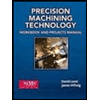a) The temperature at the surface of the heating rod, T1. (b) If the salt solution temperature is 300 degree Celcius, what is the value of convection heat transfer coefficient, h of the salt solution ? (c) If the heating rod is not covered by metallic cylinder and corresponds to the result of part (a) and (b), how much the rate of energy transfer to the salt solution ? (d) Compare and discuss the difference of heat transfer with and without the matallic cylinder.
a) The temperature at the surface of the heating rod, T1. (b) If the salt solution temperature is 300 degree Celcius, what is the value of convection heat transfer coefficient, h of the salt solution ? (c) If the heating rod is not covered by metallic cylinder and corresponds to the result of part (a) and (b), how much the rate of energy transfer to the salt solution ? (d) Compare and discuss the difference of heat transfer with and without the matallic cylinder.
Welding: Principles and Applications (MindTap Course List)
8th Edition
ISBN:9781305494695
Author:Larry Jeffus
Publisher:Larry Jeffus
Chapter26: Welding Metallurgy
Section: Chapter Questions
Problem 34R: Referring to Figure 26-20, what would the preheat temperature range be for an iron-carbon alloy with...
Related questions
Question
100%
(a) The temperature at the surface of the heating rod, T1.
(b) If the salt solution temperature is 300 degree Celcius, what is the value of convection heat transfer coefficient, h of the salt solution ?
(c) If the heating rod is not covered by metallic cylinder and corresponds to the result of part (a) and (b), how much the rate of energy transfer to the salt solution ?
(d) Compare and discuss the difference of heat transfer with and without the matallic cylinder.

Transcribed Image Text:Ti
T2
T3
Tliquid
Nuclear heating rod
Liquid X
Metallic cylinder
Salt solution
Figure 1.1 Cross-sectional view of the proposed nuclear-powered heating
system from UTeM FKM student

Transcribed Image Text:The Malaysian Royal Navy (MRN) is planning to build a new Sayang Class nuclear
submarine. UTeM FKM student has proposed the MRN a nuclear heat generating rod
for the submarine power plant with a diameter of 12 cm. It is covered by a metallic
cylinder (k = 10 W/m.K) with the inner diameter of 20 cm and 1 cm thick, as shown in
350 W/m²K). The surface
Figure 1.1. Heat is transferred by convection between the nuclear heating rod and the
hollow metallic cylinder filled with liquid X (h
temperature of the outer metallic cylinder (73) is 450 °C. The system is immersed in a
salt solution. The nuclear heating rod generates steady and constant heating power at
20 W/cm with the total length of the rod measured at 120 cm, determine:
Expert Solution
This question has been solved!
Explore an expertly crafted, step-by-step solution for a thorough understanding of key concepts.
Step by step
Solved in 4 steps with 5 images

Knowledge Booster
Learn more about
Need a deep-dive on the concept behind this application? Look no further. Learn more about this topic, mechanical-engineering and related others by exploring similar questions and additional content below.Recommended textbooks for you

Welding: Principles and Applications (MindTap Cou…
Mechanical Engineering
ISBN:
9781305494695
Author:
Larry Jeffus
Publisher:
Cengage Learning

Refrigeration and Air Conditioning Technology (Mi…
Mechanical Engineering
ISBN:
9781305578296
Author:
John Tomczyk, Eugene Silberstein, Bill Whitman, Bill Johnson
Publisher:
Cengage Learning

Precision Machining Technology (MindTap Course Li…
Mechanical Engineering
ISBN:
9781285444543
Author:
Peter J. Hoffman, Eric S. Hopewell, Brian Janes
Publisher:
Cengage Learning

Welding: Principles and Applications (MindTap Cou…
Mechanical Engineering
ISBN:
9781305494695
Author:
Larry Jeffus
Publisher:
Cengage Learning

Refrigeration and Air Conditioning Technology (Mi…
Mechanical Engineering
ISBN:
9781305578296
Author:
John Tomczyk, Eugene Silberstein, Bill Whitman, Bill Johnson
Publisher:
Cengage Learning

Precision Machining Technology (MindTap Course Li…
Mechanical Engineering
ISBN:
9781285444543
Author:
Peter J. Hoffman, Eric S. Hopewell, Brian Janes
Publisher:
Cengage Learning